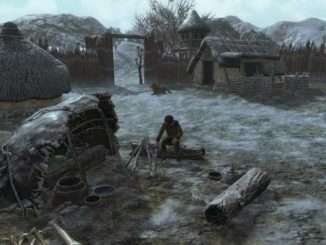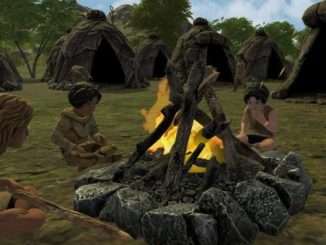
Animal domestication – from the basics to the not-so-basics. Lots of numbers, too.
Other Dawn of Man Guides:
BLUF
- It’s more efficient to tame a wild animal than kill and butcher it in the wild.
- Children can tame animals, but they must be commanded manually.
- Young animals and Old Females play no role in reproduction.
- The AI maintains a 2:1 ratio of Females to Males when slaughtering.
- From slowest reproducing to fastest: Donkey, Horse, Cattle, Goat, Sheep, Pig.
- Animals will reproduce over Winter while in the Stables.
- Stabled animals marked for slaughter will be kicked out of the Stables.
- Many animals are often born all at once in early Winter.
- Birth rate in early Winter is especially high for Pigs and hardly noticeable with Cattle.
- Goats reproduce slower than Pigs but provide more food, since they produce Milk.
- Milk can be harvested by children.
- Milk does not restore Hydration. (Ironically, Beer does.).
- Milk and Wool production cease while the animal is Stabled — including during village alarm.
- One meal restores 0.5 Nutrition (animals & humans).
- Humans don’t exhaust Nutrition while Resting or Restoring Morale.
- Factoring for R&R, Humans require ~2.15 Nutrition per year.
- Cattle need 1.6 Nutrition per season.
- Non-Cattle need 0.8 Nutrition per season.
- Non-Cattle can sometimes survive all Winter without eating any Straw.
- Cattle must eat twice per Winter.
- All domestic animals need 0.8 Hydration per season.
- Domestic animals can only drink in the wild from Rivers and Lakes.
- A Donkey or Horse pulling a Cart requires no food, water, or shelter.
- A Donkey or Horse pulling a Cart still reproduces.
- Goats are the most Straw-, tool- & task-efficient breed.
- Cattle are the most space-efficient breed.
- 100 Goats can support ~85 villagers.
- 65 Cattle can support ~85 villagers.
- 65 Cattle consume 35% more tool uses annually than 100 Goats.
- 100 Goats produce 15% more Skin & Bones than 65 Cattle.
- A Goat produces 1.78 Meat, 2.06 Milk, & 0.46 Skin/Bones per year.
- A Sheep produces 1.8 Meat, 0.48 Skin/Bones, and 1.9 Wool per year.
- A Pig produces 2.28 Meat & 0.59 Skin/Bones per year.
- A Cattle produces 1.6 Meat, 4.31 Milk, & 0.62 Skin/Bones per year.
- A Donkey produces 0.74 Meat & 0.33 Skin/Bones per year.
- A Horse produces 0.87 Meat & 0.38 Skin/Bones per year.
- On a side note, I’ve seen 18 villagers simultaneously cooking and eating around a single Hearth!
The Basics: RTFM
Click the big ?uestion mark on the menu or press F1 on your keyboard to open “Help”. Then, click the ‘Domestic Animals’ tile under the “Topics” section. Read all that. Then, click on the tile for each different domestic animal and read all that, too.
Seriously, the help files are really good in this game.
Something I’ll touch on in some detail anyway is the whole “Wild Variant” thing. Domestic animals don’t exist in the wild. Instead, you need to find and tame their “Wild Variant”. After taming the wild variant, it will immediately transform into its domestic variant where it stands. (For example, taming a Mouflon will transform it into a Sheep and add it to your flock.)
Domestic animals are a consistent, reliable source of Raw Skin and Bone.
The Not-So-Basics
In no particular order…
Taming can be performed by children, but you have to manually command the child to do it.
Hunting Tip: If you hunt manually, circle children around back and command them to tame the young animals. They’ll scare the herd towards your village and right into the hunting party.
Taming a wild animal is more efficient than killing it in the wild. By taming it, you essentially “trade” it for one of your adult animals back in the village. Not only will that animal walk itself — and all of its resources — back to the village, but that also saves two weapon shots your hunters didn’t have to take.
Since non-Cattle animals only need 0.8 Nutrition per season, some animals will enter the Stables with 0.8 Nutrition or more and not need any food all Winter. One food is 0.5 Nutrition and lasts the animal 5/8 of Winter. So, once Winter is past its first third, you can safely disable auto-feeding in the Stables and ride it out.
A significant number of animals are born during Winter. This can’t really be avoided, since animals become adults and start breeding all at the same time in Spring. I noticed this especially with Pigs. With a limit of 100 Pigs, it wasn’t uncommon to see the herd count jump up to 120 right at the beginning of Winter.
Building a Well near Stables is a good idea, but it doesn’t actually offer any benefit. What you want near the Stables is a storage structure for the Water. As of 1.0.7, we can assign Warehouses exclusively for food and water, so it’s much easier to ensure the water is kept close to the Stables.
Some Comparisons and Ratios
Because Nuts, Fruits, Berries, Vegetables, Fish, & Bread are all a thing, it’s not necessary — or even preferable — to solely rely on domestic animals for the village’s food.
There is no magic, one-size-fits-all formula for your animal ratios. The size of your herd in relation to your population, quantity of carted-up Donkeys or Horses, how far your animals wander, how often your village goes into alarm, the number of knives available, the workload when Milking/Slaughtering is needed, & distance of Stables to storage are just a few of the factors affecting how productive your herd is.
The information in this guide should get you close, but you’ll need to remaing cognizant of how your particular herd is performing in your particular village.
- Goats use the most Stable space but are otherwise the most efficient animal. They breed fast enough that a massive death-by-disease event is not a village-ending catastrophe. They have roughly equal Meat-to-Milk ratio. A 1:1 ratio is typically good.
- Sheep are needed for Wool; it’s as simple as that. A 1:10 ratio of Sheep to Humans is generally sufficient, but you may want more for trade.
- Pigs are terrible. They consume 60% more resources across the board but only provide 28% more Skin and Bones — the latter of which isn’t even necessary in the late game. Because of their high reproduction rate, the herd’s ratio of Young-to-Adult fluctuates, which also causes food production to fluctuate. They also tend to reproduce all at once in large quantities right at the beginning of Winter. A 0:1 ratio is best.
- Cattle consume 34% more Straw than Goats but are 34% more space-efficient than Goats. Their reproduction tends to be much smoother with only a small Winter spike. Cattle produce about 3 times as much Milk as Meat; this makes their food supply more volatile and prone to spoilage. A ratio between 1:2 and 3:4 is good.
- Donkeys and Horses are not for Meat production. What’s important is that when pulling a Cart, they require no food, water, or shelter but still breed as usual. There is no downside to maintaining an infinite limit of these and of Carts.
Balance Concerns
IMO, the best games have solid counterplay and trade-offs (pros and cons). So, that’s what I look for when I think of “balance”.
Maintaining an infinite limit on Donkeys, Horses, & Carts has no downside. It’s all upside: free resources. Madruga has already stated this is by design, so it’s unlikely to change. If carted-up animals didn’t breed, the player would be forced to balance their Carts in relation to their herd size.
Pigs need a buff. There is no significant upside to maintaining Pigs compared with the other domestic animals. IRL pigs are very good at huddling up and keeping warm in the winter. A nice buff would be to make Adult Pigs not need shelter in Winter; a new “Pig Trough” structure could give them a place to eat during Winter.
Conversely, Goats could use a nerf — perhaps to birthrate and/or Milk production. The strength of Cattle is their smaller footprint. Closing the food gap would make that benefit stand out more.
My Research Methods
I don’t know how to decompile code. The best I can do is decompress the save files and tinker with those.
Everything I’ve learned has been from editing saves for the default scenarios to create a specific testing situation and then playing it out within the game as well as just normal playthroughs.
My first tests were in Creative as I tried to understand the reproduction mechanics and rates. That eventually led into testing large herds of a single breed with controlled resources in Continental Dawn.
My most recent sandbox begins with a completely walled-off village of 100 Goats, 90 Humans, 11 Stables, 19 Roundhouses, 3 Wells, 1 Food Dryer, 1 Hearth, 1 Wood Pile, and 10 of each: Dolmen, Menhir, Granary, Warehouse.
All resources are controlled through never-decaying animal corpses seeded with extractable resources. When I need more of resource XYZ, I simply find the right corpse and harvest it until I have what I need.
The seeded food source is Dry Fish, so I can account for how much food was seeded versus generated by the herd.
All of the buildings of each type are built in the same spot, so it’s an impossible village. It’s way easier to make villages like that when editing the save, and it also ensures a near-optimal setup.





What’s the best way to manually cull your herd when it grows too large?
First I kill the old, then the males (leaving only a couple to breed).
But I’m starting to wonder if it’s more efficient to kill the young.
Thoughts?